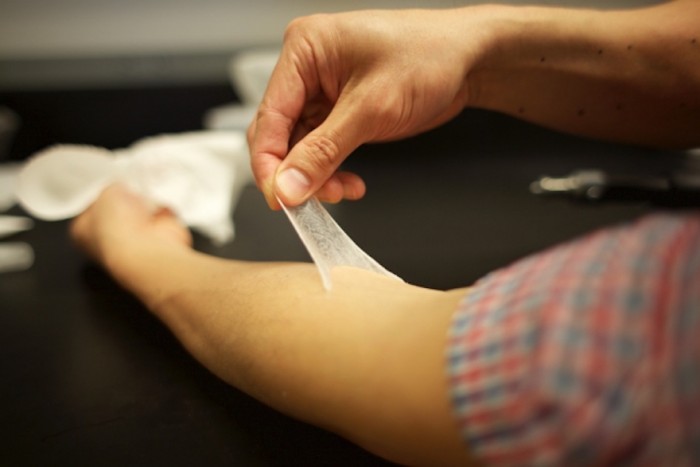
A new material, designed to eliminate the tell-tale signs of ageing, could also be used in a number of medical applications. According to MIT news, scientists at MIT, Massachusetts General Hospital (MGH), Living Proof, and Olivo Labs created a silicone-based polymer that can temporarily protect and tighten skin and smooth wrinkles.
“It’s an invisible layer that can provide a barrier, provide cosmetic improvement, and potentially deliver a drug locally to the area that’s being treated. Those three things together could really make it ideal for use in humans,” says Daniel Anderson, an associate professor in MIT’s Department of Chemical Engineering.
As skin ages, it becomes less firm and less elastic. It is also vulnerable to the environment and can damage if over-exposed to the sun. The researchers say their product, described as a second skin, is applied to the skin as a thin, imperceptible coating. It mimics the mechanical and elastic properties of healthy, youthful skin. It could also be used as long lasting protection from the sun.
“We started thinking about how we might be able to control the properties of skin by coating it with polymers that would impart beneficial effects,” Anderson says. “We also wanted it to be invisible and comfortable.”
Barbara Gilchrest, a dermatologist at MGH, explains that creating a material that behaves like skin has been a challenge for a number of years. “Many people have tried to do this, and the materials that have been available up until this have not had the properties of being flexible, comfortable, nonirritating, and able to conform to the movement of the skin and return to its original shape.”
The second skin was created using a network arrangement known as a cross-linked polymer layer (XPL). The researchers then tested for the chemical structure that would best mimic the appearance, strength, and elasticity of healthy skin.
Thahn Nga Tran, a dermatologist and instructor at Harvard Medical School, who was not involved in the research said the new material shows promise: “I think it has great potential for both cosmetic and noncosmetic applications, especially if you could incorporate antimicrobial agents or medications.”






